How To Make Aceh Tempe Noodles
Hello all..!!
Today I will share the recipes of aceh noodles mixed with Tempe. maybe this noodle is not much different with jengkol noodles that I have discussed several days yesterday. But this tempe noodle is easier to consume.
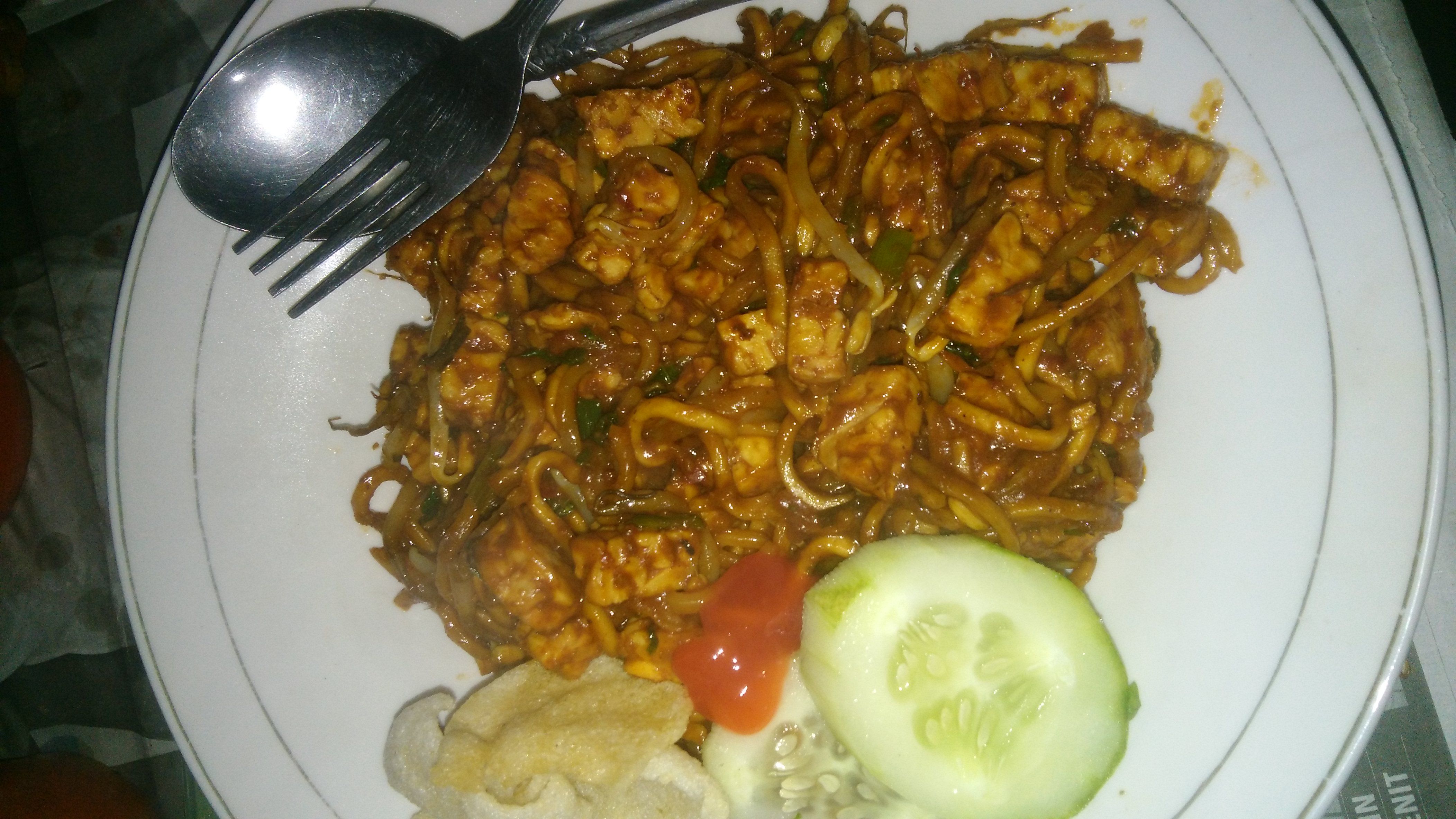
Know why tempeh noodle is easier to consume ???
In because the material (tempe) more easily we get in your nearest kiosks than jengkol fruit which I explained yesterday. after I try the tempe noodles with noodles jengkol turns this tempeh noodle is also not much different from jengkol noodle. although different ways of making it, but the taste is extraordinary.
Here I love to know the recipes that we must use to process tempe noodles
The first tempe(Aceh Language) we have washed
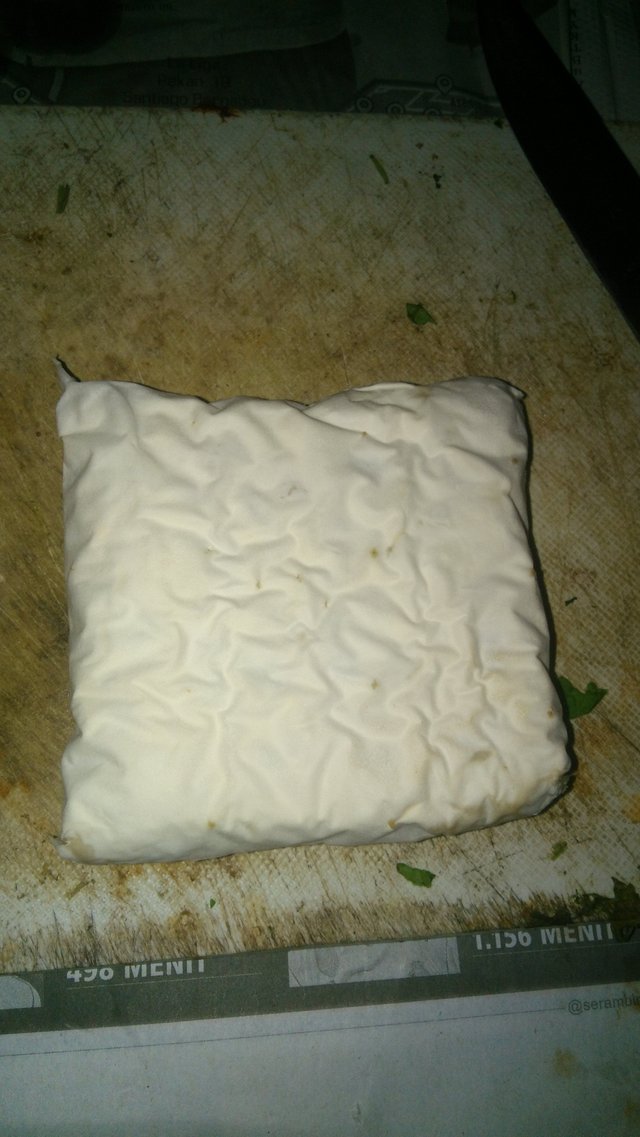
Then the tempe(Aceh language) that we have washed in proceed to be cut into pieces.
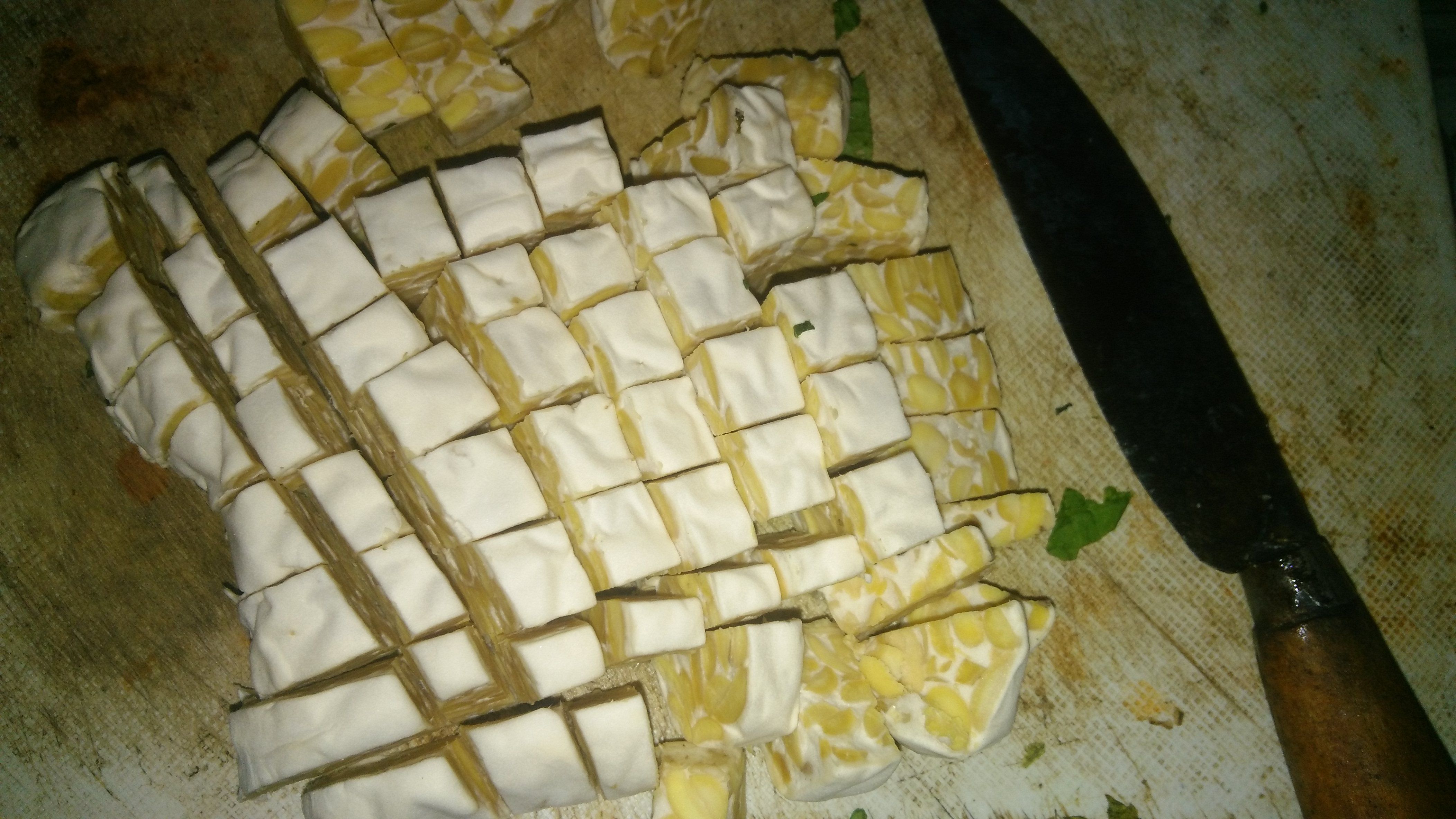
Furthermore, in the iriskan complementary materials such as:
- Tomato
- Red onion
- bean sprouts
- Cayenne pepper
- Garlic
- Leek
- cabbage
![IMG_20180114_193357[1].jpg](https://steemitimages.com/640x0/https://steemitimages.com/DQmf1mP6mtaN7xeuCgKVADD2afc4buKke4sqRQM15BdidpT/IMG_20180114_193357%5B1%5D.jpg)
4 . Then, all the ingredients that have been cut into pieces include tempe. pour into a pan. and stir until blended.
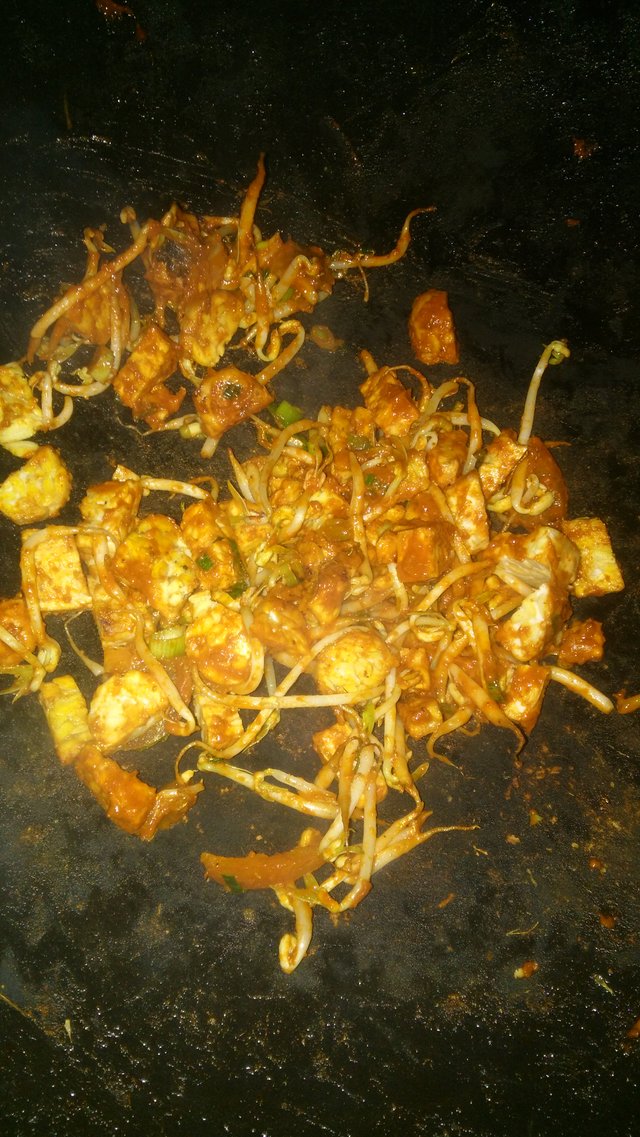
5 . Then, in pour water sedit approximately 100 milli. Wait until two minutes until the water in the pan boils.
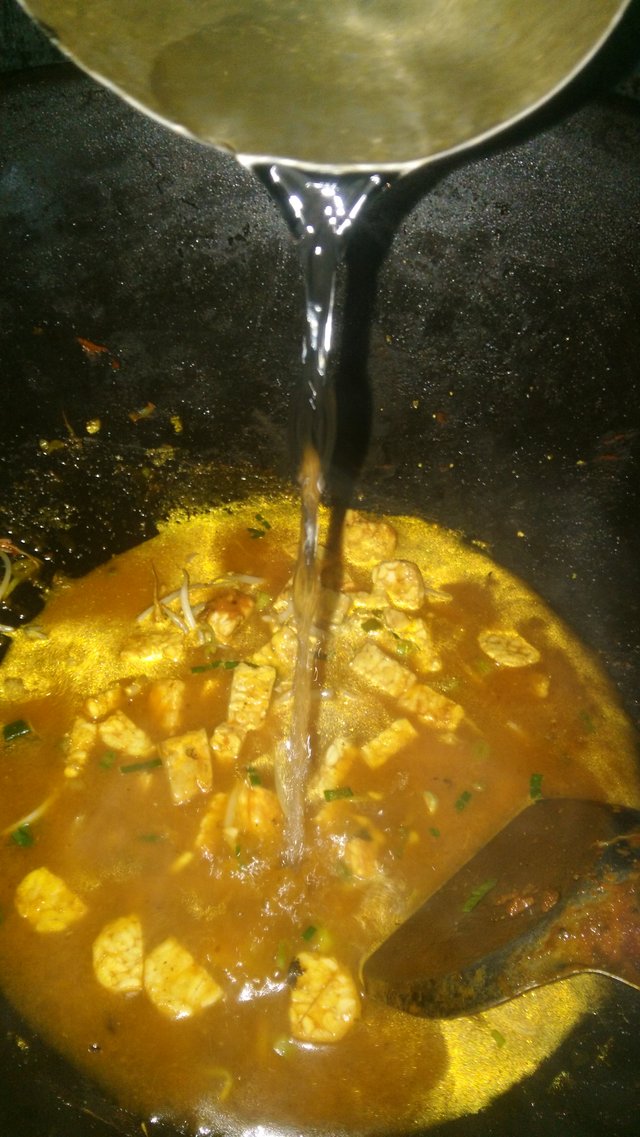
6 . Then take a little mustard and soup, cut into small pieces.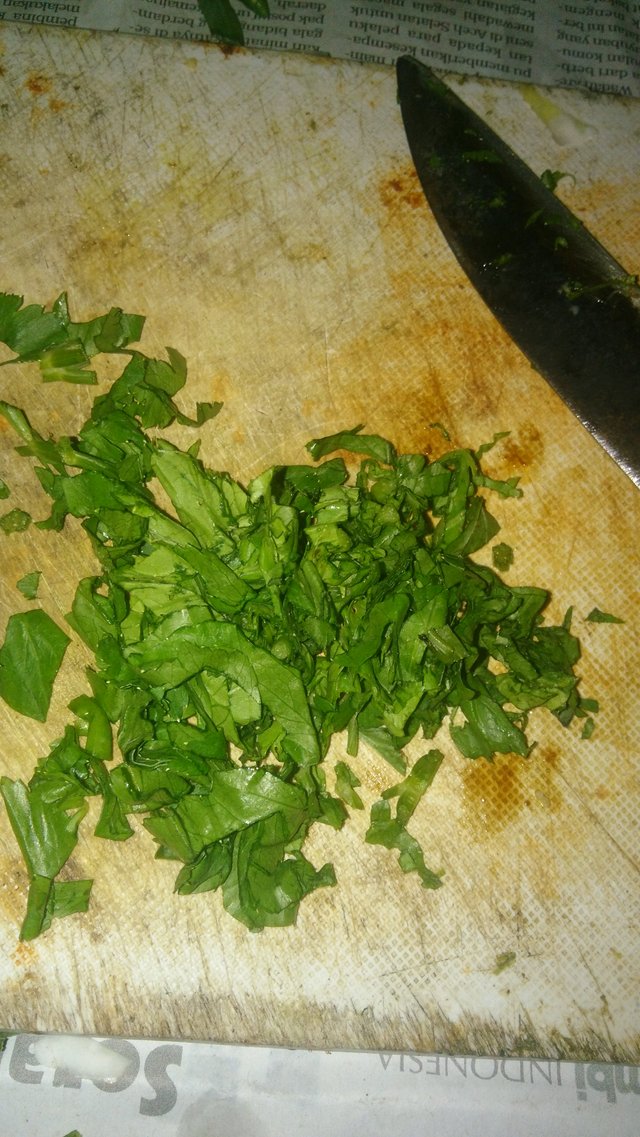
7 . Then continue with flour noodles and mustard soup in place into a skillet, a little tomato sauce plus salty soy sauce.

8 . And last 3 minutes, until the noodles are cooked and fried until smooth. and ready to serve in the dish.
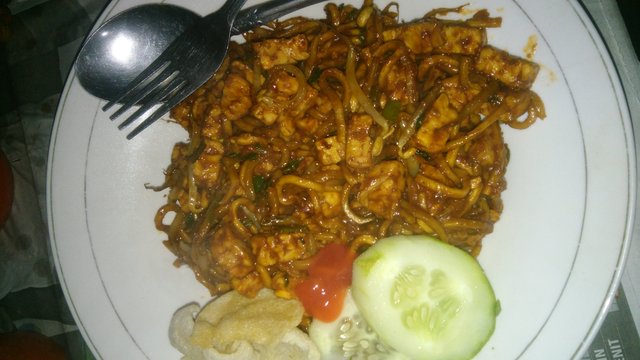
How about the Steemians
Easy way to process it, even easier than jengkol noodle.
What is tempe
Tempe is a food made from fermentation to soybean seeds or some materials that use several types of Rhizopus molds, such as Rhizopus oligosporus, Rh. oryzae, Rh. stolonifer (bread mold), or Rh. arrhizus This fermentation preparation is commonly known as "yeast tempe
Shellfish grown in soybeans hydrolyzes complex compounds into simple compounds that are easily digested by humans. Tempeh is rich in dietary fiber, calcium, vitamin B and iron. Various kinds of content in tempe have medicinal value, such as antibiotics to cure infections and antioxidants preventing degenerative diseases.. In general, the tempe is white because of the growth of the moldy capillary which attaches the soybean seeds to form a dense texture. Degradation of soy components in fermentation makes tempe has a distinctive flavor and aroma. In contrast with tofu, tempeh tasted a bit sour.
Tempe is widely consumed in Indonesia, but is now worldwide. Many vegetarians around the world have used tempe instead of meat. As a result now tempe is produced in many places in the world, not only in Indonesia. Various studies in a number of countries, such as Germany, Japan, and the United States. Indonesia is also now trying to develop a strain (superior strain) Rhizopus to produce a faster tempe, quality, or improve the nutritional content of tempeh. Some are concerned that this activity may threaten the existence of tempe as a foodstuff because of superior yeast lines can be registered for patents so that their use is protected by law (requires license from the patent holder).
Making tempe
There are various methods of making tempe. [1] [2] However, the technique of making tempe in Indonesia generally consists of boiling, stripping, soaking and acidification, leaching, inoculation with yeast, packing, and fermentation. [3]
In the early stages of making tempe, soybean seeds are boiled. This boiling stage serves as a hydration process, which is so that soybean seeds absorb as much water as possible. Boiling is also intended to soften soybean seeds so that later can absorb acid at the immersion stage.
The skin of soybean seeds is peeled at stripping stage so that the fungal mycelium can penetrate the soybean seed during the fermentation process. Peeling can be done by hand, trampled with feet, or with a peeler.
After peeling, soybean seeds soaked. The purpose of the immersion stage is to hydrate the soybean seeds and allow the lactic acid fermentation naturally to obtain the acidity required for the growth of the fungus. Fermentation of lactic acid occurs characterized by the emergence of acidic odors and foam in immersion water due to the growth of Lactobacillus bacteria. When the growth of lactic acid bacteria is not optimum (eg in subtropical countries [4], acids need to be added to the immersion water, lactic acid fermentation and acidification are also beneficial in increasing nutritional value and eliminating toxic bacteria.
The final washing process is carried out to remove any impurities that may be formed by lactic acid bacteria and so that the soybean seeds are not very acidic. Bacteria and feces can inhibit fungi growth.
Inoculation is done by addition of inoculum, ie yeast tempe or laru. The inoculum may be a mold that grows and dried on waru leaves or teak leaves (called usar, traditionally used), tempe spores in medium flour (wheat, rice, tapioca, sold in the market), or pure R. oligosporus cultures commonly used by tempe makers outside Indonesia). [5] [6] Inoculation can be done in two ways, namely (1) the spread of inoculum on the surface of cold soybeans and dried, then mixed evenly before wrapping; or (2) the inoculum may be mixed directly at the time of immersion, left for a while, then dried.
After inoculation, the soybean seeds are wrapped or placed in containers for fermentation. Various packing materials or containers can be used (eg banana leaves, waru leaves, teak leaves, plastics, glass, wood, and steel), as long as it allows air entry because tempe's mold needs oxygen to grow. Leaf or plastic wrapping material is usually stuck with punctures.
Soybean seeds that have been wrapped are allowed to undergo a fermentation process. In this process the mold grows on the surface and penetrates the soybean seeds, uniting them into tempeh. Fermentation can be carried out at a temperature of 20 ° C-37 ° C for 18-36 hours. Shorter fermentation times are usually for tempe using much higher inoculums and temperatures, while traditional processes using laru from leaves usually require fermentation time up to 36 hours.
So for the day, more and more I apologize, hopefully can be useful for all friends.